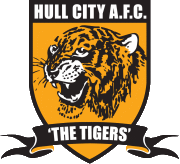
HULL CITY A.F.C.
Founded: 1904

CLICK ON THE MAP TO
VIEW ENLARGED MAP
|
HULL CITY A.F.C. (Association Football Club)
Included Info: Brief History, Club/Stadium Info, Team Jersey & Much More...
BRIEF HISTORY of HULL CITY FOOTBALL CLUB
(reproduced from 'Wikipedia' pages)
Hull City Association Football Club was founded in June 1904; previous attempts to found a football
club had proved difficult because of the dominance in the city of rugby league teams such as Hull F.C.
and Hull Kingston Rovers. The club was unable to apply for membership of the Football League for
the 1904–05 season and instead played only in friendlies. After having played 44 friendly fixtures
the previous season, Hull City were finally admitted into the Football League Second Division for
the 1905–06 season. Hull City and Grimsby Town were the only two professional teams which had
official permission to play league football on Christmas Day because of the demands of the fish
trade. That tradition has now disappeared following the dramatic reduction of their trawler fleets
in recent years. Hull continued to finish consistently in the top half of the table. They came close
to promotion in the 1909–10 season, recording what would be their highest finish until they matched
it in 2008. Hull finished third, level on points with second placed Oldham Athletic, missing promotion
on goal average by 0.29 of a goal. Hull regularly finished in the top half of the table before the
First World War, but after the war the team finished in the bottom half in seven seasons out of eleven,
culminating in relegation to the Third Division North in 1930.
Hull's greatest achievement in cup competitions until 2014 was in 1930, when they reached the FA Cup
semi-finals. The cup run saw Hull knock out the eventual champions of the Second and Third Divisions;
Blackpool and Plymouth Argyle respectively. After the Second World War, the club moved to another new
ground, Boothferry Park. In the 1948–49 season, managed by former England international Raich Carter,
Hull won the Third Division North championship. Hull City had promotion seasons from the Third to the
Second Division again in 1959 and 1966, winning the Third Division in the latter season. Hull also
became the first team in the world to go out of a cup competition on penalties, beaten by Manchester
United in the semi-final of the Watney Cup on 1 August 1970. By the early 1980s, Hull City were in the
Fourth Division, and financial collapse led to receivership. Don Robinson took over as chairman and
appointed Colin Appleton as the new manager. Both had previously held the equivalent roles with
non-league Scarborough. Promotion to Division Three followed in 1983, with a young team featuring the
likes of future England international Brian Marwood, future England manager Steve McClaren,
centre-forward Billy Whitehurst, and the prolific goal-scorer Les Mutrie. When Hull City missed out
on promotion by one goal the following season, Appleton left to manage Swansea City.
Hull reached the Second Division in 1985. They remained there for the next six years before finally
going down in 1991. Hull finished 14th in the Third Division in the 1991–92 season, meaning that they
would be competing in the new Second Division the following season. In their first season in the
rebranded division, Hull narrowly avoided another relegation. Financial difficulties hampered City's
progress. In the 1995–96 season Hull were relegated to the Third Division. Despite briefly being locked
out of Boothferry Park by bailiffs and facing the possibility of liquidation,[14] Hull qualified for
the Third Division play-offs in the 2000–01 season, losing in the semi-finals to Leyton Orient. A boardroom
takeover by former Leeds United commercial director Adam Pearson had eased the club's precarious financial
situation and all fears of closure were banished. Hull were Third Division runners-up in 2003–04 and League
One runners-up in 2004–05; these back-to-back promotions took them into the Championship, the second tier
of English football. The 2005–06 season, the club's first back in the second tier, saw Hull finish in
18th place, 10 points clear of relegation and their highest league finish for 16 years. Hull City improved
greatly on their relegation battle of 2006–07 and qualified for the play-offs after finishing the season
in third place. Their ascent from the bottom division of the Football League to the top division of English
football in just five seasons is the third-fastest ever. Despite being one of the favourites for relegation
in the 2008–09 season, Hull began life in the Premier League by beating Fulham 2–1 on the opening day in
their first ever top flight fixture.
|
CLUB FACTS & INFORMATION
| Official Name
| --
| Hull City A.F.C. |
| Club Nickname
| --
| The Tigers |
| Year Founded
| --
| 1904 (113 years ago) |
| English County
| --
| East Riding of Yorkshire |
| Current Ground
| --
| KCOM Stadium |
| Ground Location
| --
| Kingston upon Hull, England |
| Club's Owner
| --
| Assem Allam |
| Club Chairman
| --
| Assem Allam |
| Current Manager
| --
| Leonid Slutsky |
| Current League
| --
| Championship |
| Last Season
| --
| Premier League, 18th place
(relegated to Championship) |
HOME COLORS

Amber & Black |
AWAY COLORS

White with
Black/Amber Trim |
|
| |
INTERESTING STADIUM FACTS & INFORMATION

KCOM STADIUM
The Circle, Walton St, Hull,
Kingston upon Hull, HU3-6HU England
OPENED: ......... December 18, 2002
SURFACE: ........ Rye Grass (3% artificial additive)
COST: .............. £44 Million
CAPACITY: ...... 25,400
RECORD: ......... 24,350 (2008 vs Crystal Palace)
OWNER: ........... Hull City Council
OPERATOR: ..... Stadium Management Company
FIELD SIZE: ...... 125 x 81 yards (114 x 74 meters)
|
|
|
HOME JERSEY
 |
AWAY JERSEY
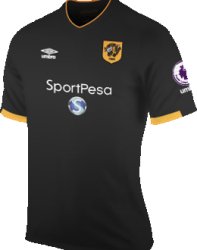 |
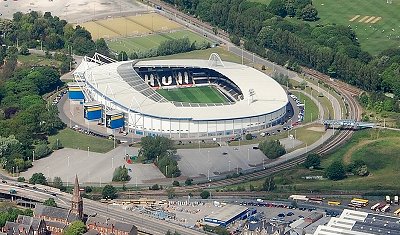
Click On Aerial Photo To View/Download Enlarged Image
|
KC Stadium (Hull City) Seating Diagram
Click On Diagram Below To Enlarge View
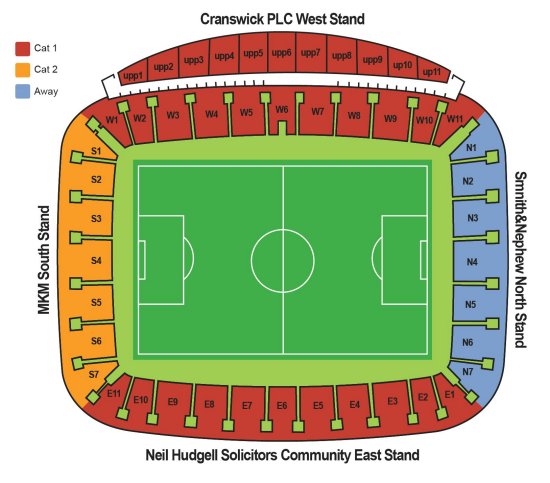
|



HULL CITY STADIUM WALLPAPERS (Free Download)
Wallpaper Size below is 800x600: To Download Bigger Sizes, Click On Any Button Shown Above
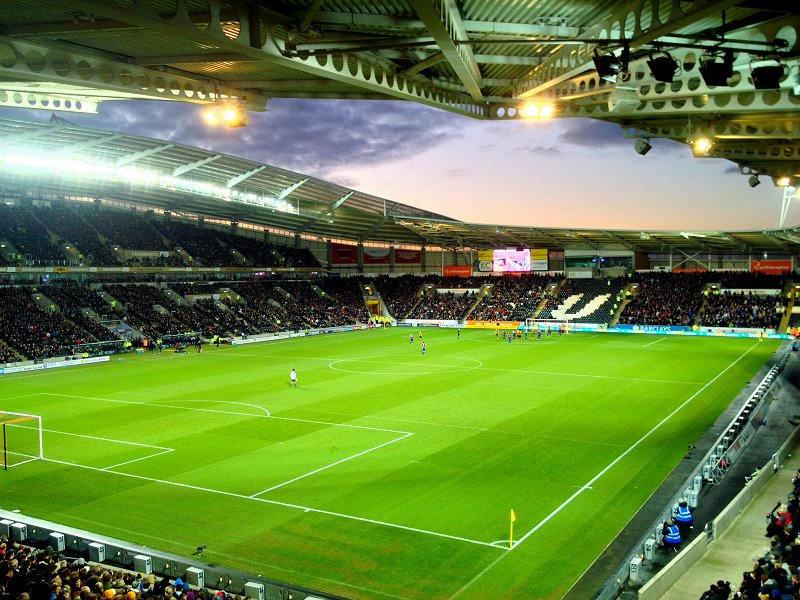
|
|

